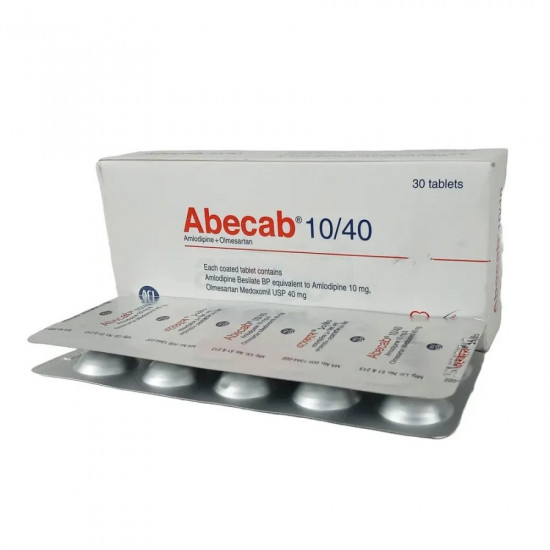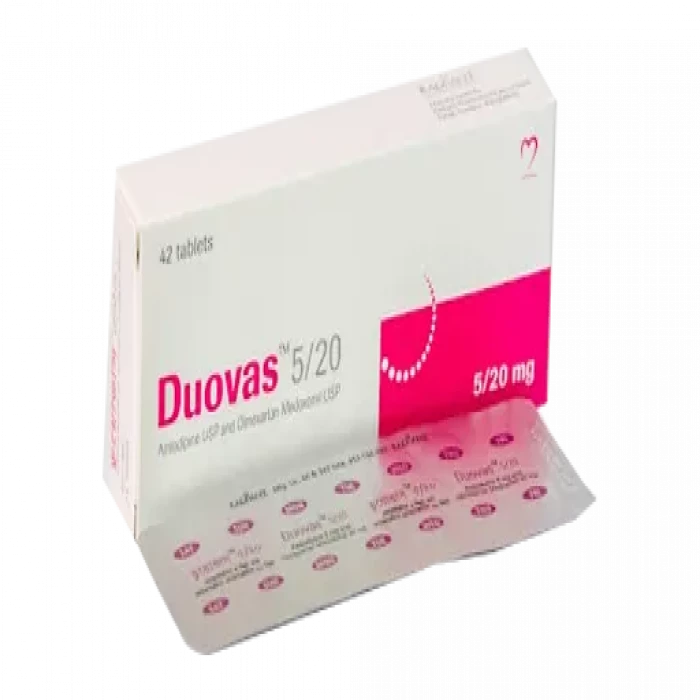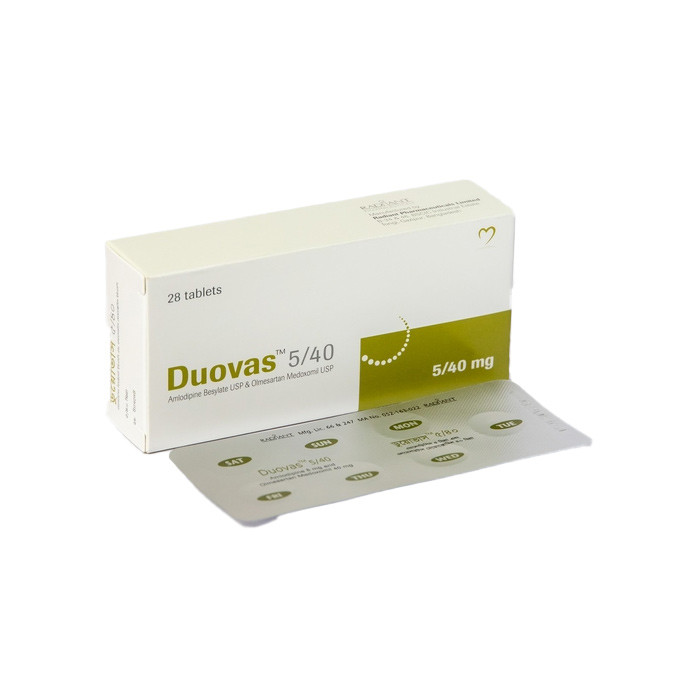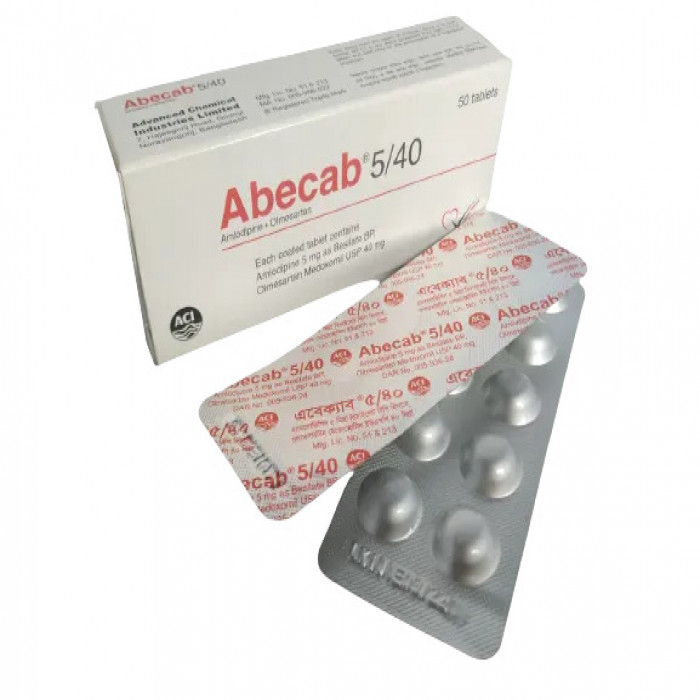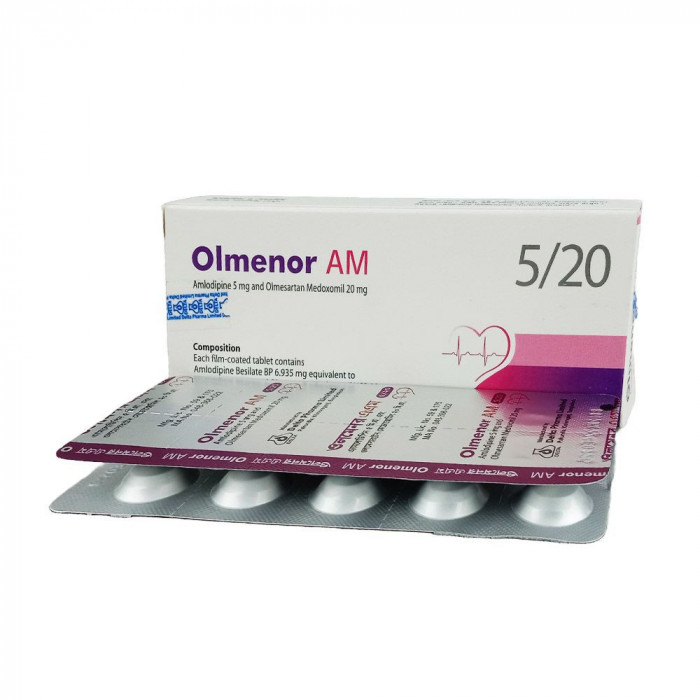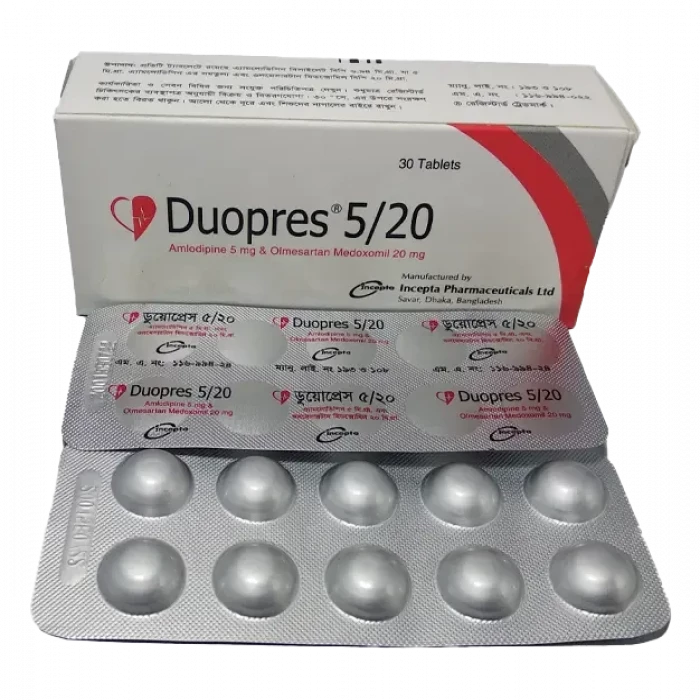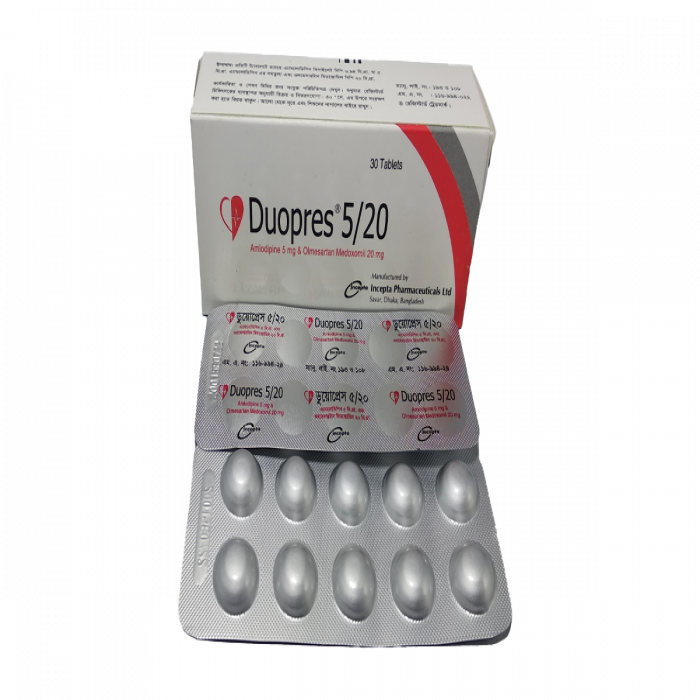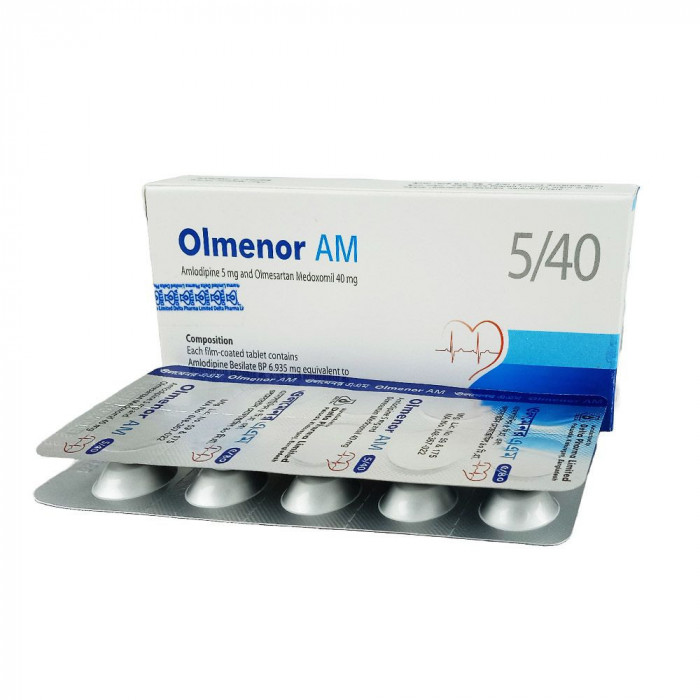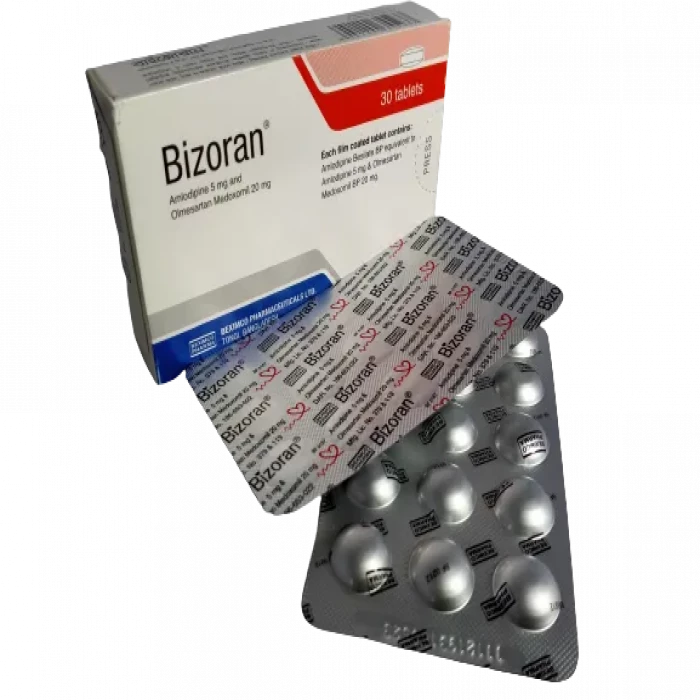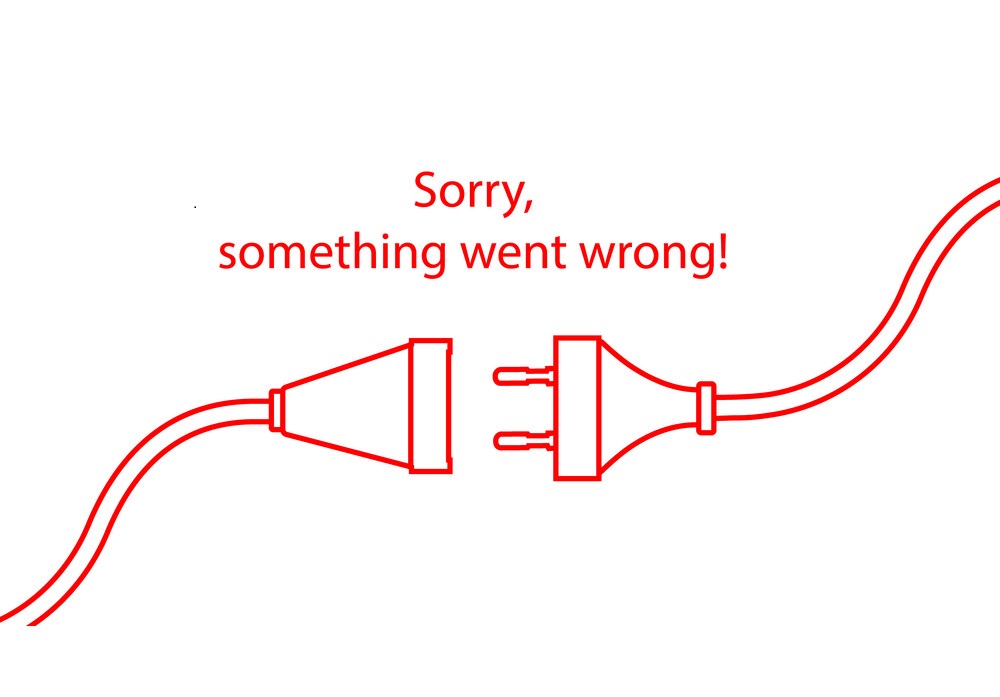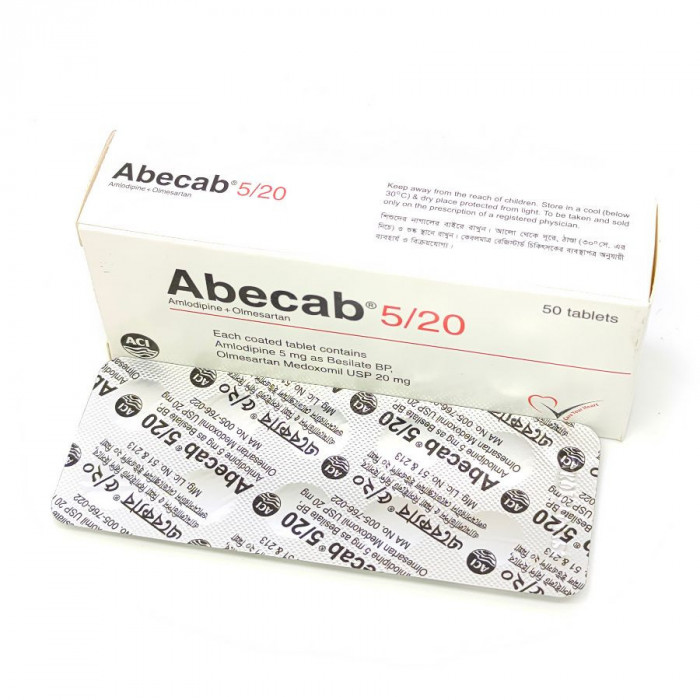
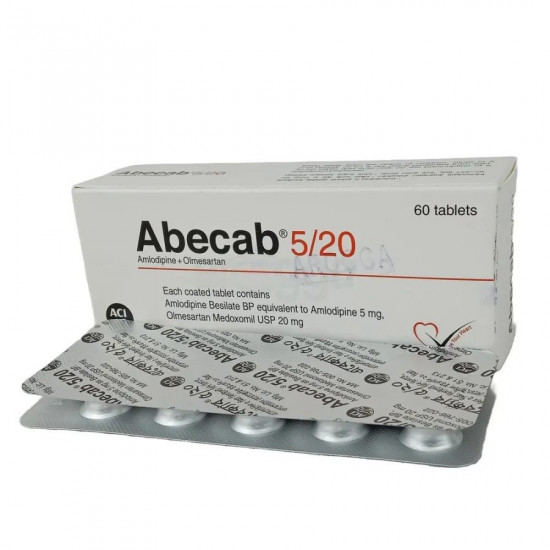
✔ 100% Authentic Product
👁️ Currently Viewing 2077
Abecab 5/20mg Tablet 1 Strip
Amlodipine, a dihydropyridine-type calcium channel blocker, lowers blood pressure by inhibiting calcium ion entry into vascular smooth muscle and cardiac muscle, with a more pronounced effect on blood vessels. This results in vasodilation and decreased peripheral vascular resistance.
Olmesartan Medoxomil, an angiotensin II receptor blocker (ARB), works by selectively blocking the binding of angiotensin II to the AT1 receptors in tissues such as vascular smooth muscle and the adrenal glands. This action inhibits vasoconstriction and aldosterone release without interfering with the ACE enzyme, allowing for effective blood pressure reduction without affecting bradykinin metabolism.
Discount
Price: ৳ 113
MRP:
৳
120
6%
Off

100% Genuine Products, Guaranteed

Safe & Secure Payments, Always

Fast, Secure & Efficient Delivery

Proper Packaging
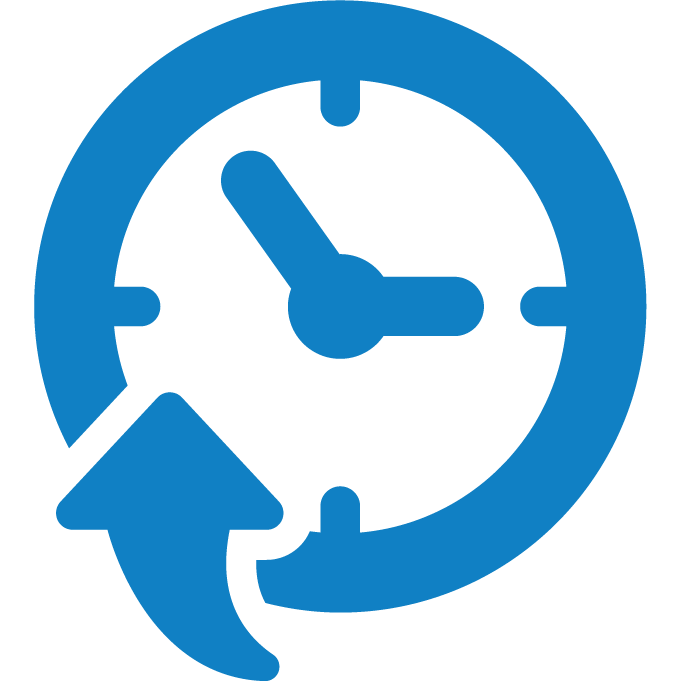 Cash on Delivery - All over Bangladesh
Cash on Delivery - All over Bangladesh Regular Delivery - 12-24 Hours, Dhaka City* Charge Tk.39-59
Regular Delivery - 12-24 Hours, Dhaka City* Charge Tk.39-59 Regular Delivery - 24-48 Hours, Other Cities* Charge Tk.99-110
Regular Delivery - 24-48 Hours, Other Cities* Charge Tk.99-110
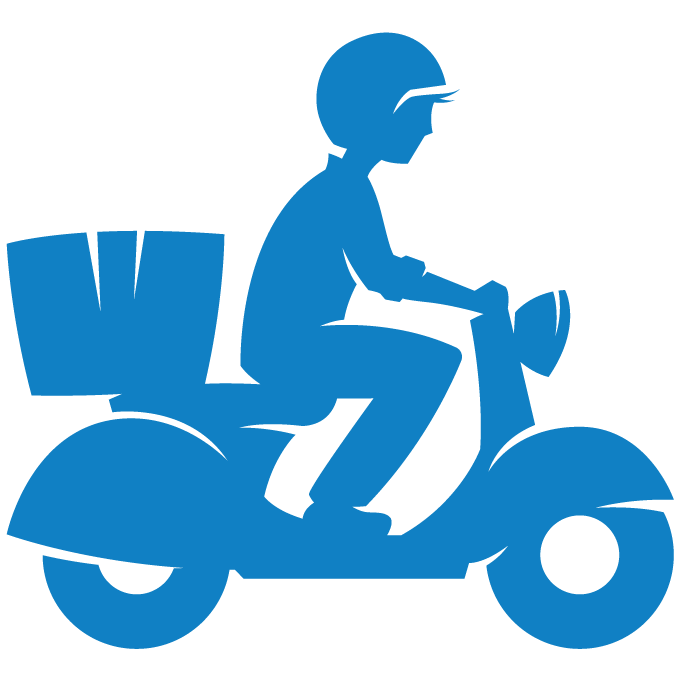 ফ্রি ডেলিভারিঃ - ৯৯৯ টাকা+ অর্ডারে, ঢাকা
শহরে
ফ্রি ডেলিভারিঃ - ৯৯৯ টাকা+ অর্ডারে, ঢাকা
শহরে ফ্রি ডেলিভারিঃ - ২৯৯৯ টাকা+ অর্ডারে, ঢাকার
বাহিরে
ফ্রি ডেলিভারিঃ - ২৯৯৯ টাকা+ অর্ডারে, ঢাকার
বাহিরে
100% Genuine Products, Guaranteed
Safe & Secure Payments, Always
Fast, Secure & Efficient Delivery
Proper Packaging
 Cash on Delivery - All over Bangladesh
Cash on Delivery - All over Bangladesh Regular Delivery - 12-24 Hours, Dhaka City* Charge Tk.39-59
Regular Delivery - 12-24 Hours, Dhaka City* Charge Tk.39-59 Regular Delivery - 24-48 Hours, Other Cities* Charge Tk.99-110
Regular Delivery - 24-48 Hours, Other Cities* Charge Tk.99-110 ফ্রি ডেলিভারিঃ - ৯৯৯ টাকা+ অর্ডারে, ঢাকা
শহরে
ফ্রি ডেলিভারিঃ - ৯৯৯ টাকা+ অর্ডারে, ঢাকা
শহরে ফ্রি ডেলিভারিঃ - ২৯৯৯ টাকা+ অর্ডারে, ঢাকার
বাহিরে
ফ্রি ডেলিভারিঃ - ২৯৯৯ টাকা+ অর্ডারে, ঢাকার
বাহিরে
✅ Description:
Abecab is prescribed for managing high blood pressure, either alone or with other antihypertensive medications. It may be used as an initial treatment in patients expected to require multiple agents to reach their target blood pressure. The decision to begin therapy with this combination should be individualized, considering factors such as the patient’s initial blood pressure levels, the target BP, and the likelihood of reaching the goal with combination therapy versus monotherapy. Blood pressure goals may differ depending on the individual's cardiovascular risk profile.
✔️ Therapeutic Class
Combination antihypertensive agents (Calcium Channel Blocker + ARB).
✔️ Dosage & Administration
Patients already taking Amlodipine and Olmesartan separately can switch to Abecab at equivalent doses. The combination may be adjusted by increasing the dose of either or both components as needed.
Initial dose: 5/20 mg once daily, which can be increased over 1–2 weeks to a maximum of 10/40 mg once daily.
Elderly patients (≥75 years): Since Amlodipine clearance is reduced, a starting dose of 2.5 mg is advisable, but the combination product does not allow for this lower dose. Therefore, starting therapy with Abecab is not advised in this age group.
Pediatrics: Safety and efficacy are not established.
Geriatrics: No notable differences in safety or efficacy compared to younger patients.
Renal impairment: No dedicated studies available.
Hepatic impairment: Not recommended as initial therapy.
✔️ Side Effects
- Peripheral swelling
- Headache
- Facial flushing
- Dizziness
✔️ Drug Interactions
Nonsteroidal anti-inflammatory drugs (NSAIDs), including COX-2 inhibitors, may reduce the antihypertensive effect of Olmesartan. Close monitoring of blood pressure, kidney function, and electrolytes is recommended when used in combination with NSAIDs or other agents that affect the renin-angiotensin system (RAS).
✔️ Contraindications
Concomitant use with Aliskiren is contraindicated in diabetic patients due to the risk of renal impairment, hypotension, and hyperkalemia.
✔️ Use During Pregnancy & Lactation
Pregnancy Category D: Not recommended during the second or third trimester due to the risk of fetal harm or death. Discontinue immediately if pregnancy is detected.
Lactation: It is unclear whether the drug is secreted in human milk. A risk-benefit assessment should guide the decision to continue the drug or breastfeeding.
✔️ Precautions & Warnings
Use cautiously in the following cases:
- Patients with volume or salt depletion may experience symptomatic hypotension.
- Patients with severe aortic stenosis may have exaggerated responses due to vasodilation.
- Patients with severe coronary artery disease may experience worsening angina or an acute myocardial infarction when starting or increasing doses.
✔️ Storage:
Store at temperatures not exceeding 30°C. Protect from light and moisture. Keep out of children's reach.
⚠️Disclaimer:
At ePharma, we’re committed to providing accurate and accessible health information. However, all content is intended for informational purposes only and should not replace medical advice from a qualified physician. Please consult your healthcare provider for personalized guidance. We aim to support, not substitute, the doctor-patient relationship.




